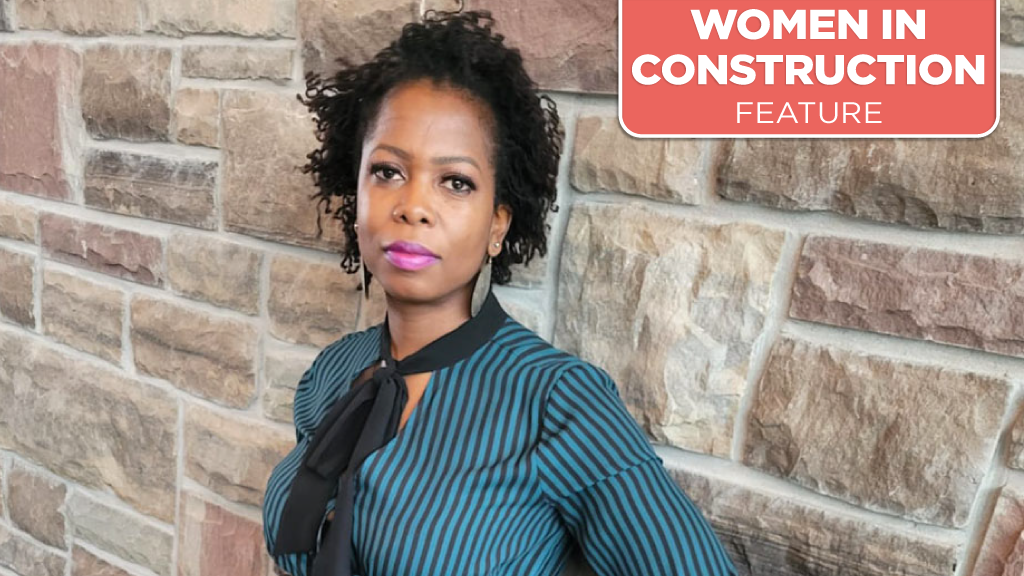Named in honour of its 2005 president, the Ontario Association of Architects’ G. Randy Roberts Service Award recognizes OAA members for ‘behind-the-scenes’ dedication and action and who are not motivated by a desire for recognition or glory/reward.
The 2022 recipient is Camille Mitchell, a project architect with Gensler who believes that award summary describes her commitment to the architectural profession and a long list of non-profit organizations she either help start or serves on.
“I do a lot of things quietly,” says Mitchell, who was unanimously selected by the OAA’s Service Jury Award for leveraging her achievements in architecture for the involvement of under-represented groups in the design of their built environments.
The award was formally presented at Recognition Lunch event as part of the association’s recent annual conference.
“When the Service Awards Jury got together virtually to review the nominees, we were all amazed at Camilla’s dynamic capacity. We thought she probably had enough drive to be three people, given the number of initiatives she has spearheaded and participated in, says OAA president Susan Speigel.
Mitchell is a founding member of both Building Equality in Toronto Architecture (BEAT) and Black Architects + Interior Designers Association ���ϳԹ���, contributes to the University of Waterloo School of Architecture’s advisory board on Racial Equity and Environmental Justice, and is founding supporter of OCAD University’s Black Spark Initiative, a fundraising campaign to bring support to Black artist and designers.
In 2021, she was also selected by the Royal Architectural Institute of ���ϳԹ��� to become an advisor to its Promoting Justice and Equity Committee.
Born and raised in Hamilton, Ont., Mitchell can trace her interest in architecture back to when she was very young.
“I grew up with a drafting table in our house,” says Mitchell, explaining her father was a draftsman in Trinidad who immigrated to ���ϳԹ��� after being recruited by an engineering firm.
Although not knowing what the “weird green table” was used for, she would grab the rulers, pencils, and other equipment to create her own drawings. As the youngest of four children, she would also help her father with building projects, such as erecting a family deck.
A French Immersion student in both elementary and high school, her interest in architecture and building was cultivated and nurtured via a half-day four-month Grade 11 career placement with the architectural firm of Garwood-Jones and Hanham Architects. (Trevor Gardwood-Jones was a prominent Hamilton architect who designed many of the city’s landmark buildings such as Hamilton Place.) Most of her duties were office-type work such as copying blueprints.
“I didn’t get to work on any projects. But I did get to go on building sites.”
Just as importantly—or perhaps more importantly—the architects encouraged her to consider the University of Waterloo’s School of Architecture. By the time she had graduated from high school, Mitchell had acquired the eight credits, including algebra, calculus, and geometry to gain acceptance.
“The program is four years, but it takes five years to complete, as it includes co-op placements.”
Those placements provided her with a wealth of varied experiences, as she worked, at different times, for the architectural departments of the Toronto Transit Commission and the Ontario Ministry of Health, as well as with a New York City architectural firm and another one in Paris where her French Immersion studies proved to be invaluable.
Working for Arquitectonica Paris for four months in 2006, she helped produce design development drawings/window treatment studies for Microsoft’s European Headquarters
After graduating with a Bachelor of Architecture in 2006, Mitchell then furthered her education and achieved a Master of Architecture from Waterloo in 2009.
In December of that year she joined KPMB Architects and for six years was the project architect from — “design concept to completion” — on the Kellogg School of Management at Northwestern University in Evanston, Illinois.
During her time with KPMB, Mitchell, along with many others, founded Building Equality in Architecture Toronto (BEAT), a volunteer organization of architects, designers, and entrepreneurs dedicated to advocating for greater roles for women in the design professions. It now has chapters across ���ϳԹ���.
“An interest in promoting advancement, retention of women, and it was a great opportunity to grow my personal network,” replies Mitchell, when asked her reasons for becoming involved in the creation of the organization.
Later she went on to establish Black Architects + Interior Designer Association after being profiled in both a Globe and Mail article and a CBC documentary.
“Following those national features I was contacted by various Black designers and brought them together with no agenda other than to grow individual networks. It quickly developed into a organization to promote visibility, advancement and retention of Black professionals across the design profession.”
Mitchell recalls reading an article, a number of years ago, in an American architectural magazine which pointed out that 0.2 per cent of American black women are architects. There are no similar statistics for ���ϳԹ���.
“It (the article) was an eye opener. I always assumed architecture to reflective of the proportional population.”
While stressing that not every one of society’s shortcomings can be rectified by simply throwing money at it, Mitchell says it’s crucial to attract more underrepresented groups into the architectural and design professions, especially considering architecture’s importance.
“We are, after all, surrounded by buildings.”











Recent Comments
comments for this post are closed